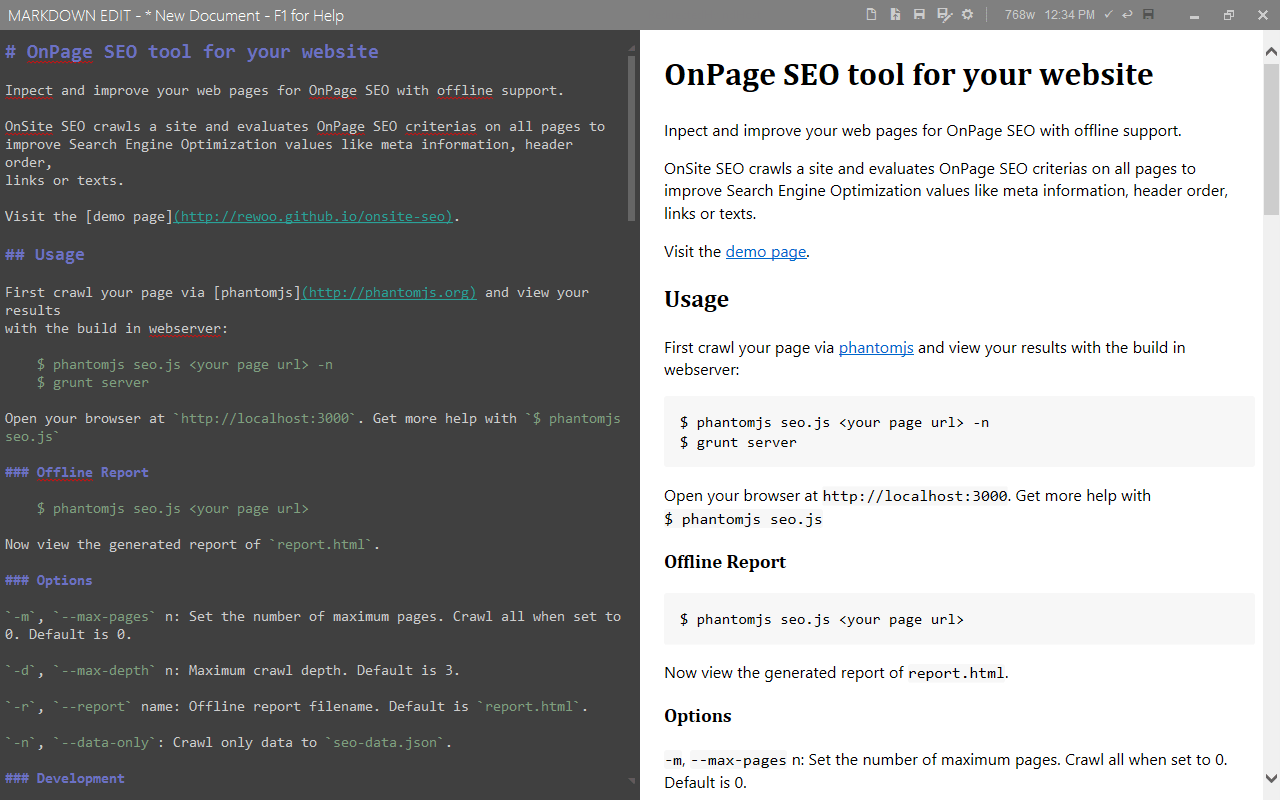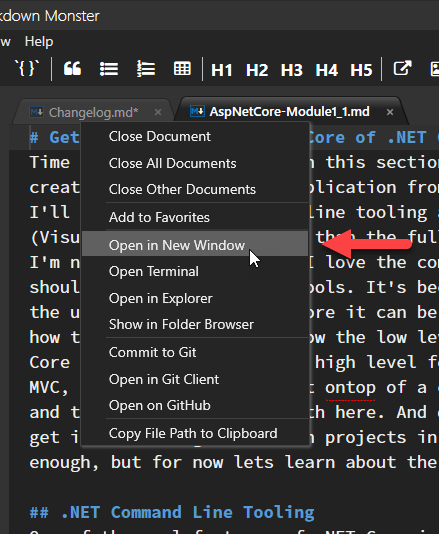
Its key design goal was readability, that the language be readable as-is, without looking like it has been marked up with tags or formatting instructions, unlike text formatted with 'heavier' markup languages, such as Rich Text Format (RTF), HTML, or even wikitext (each of which have obvious in-line tags and formatting instructions which can make the text more difficult for humans to read). Gruber created the Markdown language in 2004, with Swartz acting as beta tester, had the goal of enabling people "to write using an easy-to-read and easy-to-write plain text format, optionally convert it to structurally valid XHTML (or HTML)." In 2002 Aaron Swartz created atx and referred to it as "the true structured text format".

Markdown was inspired by pre-existing conventions for marking up plain text in email and usenet posts, such as the earlier markup languages setext (c. This was addressed in 2014, when long-standing Markdown contributors released CommonMark, an unambiguous specification and test suite for Markdown. The initial description of Markdown contained ambiguities and raised unanswered questions, causing implementations to both intentionally and accidentally diverge from the original version. Markdown is widely used in blogging, instant messaging, online forums, collaborative software, documentation pages, and readme files. John Gruber created Markdown in 2004 as a markup language that is appealing to human readers in its source code form.

Markdown is a lightweight markup language for creating formatted text using a plain-text editor. Pandoc, MultiMarkdown, Markdown Extra, CommonMark, RMarkdown ĭaringfireball.


 0 kommentar(er)
0 kommentar(er)
